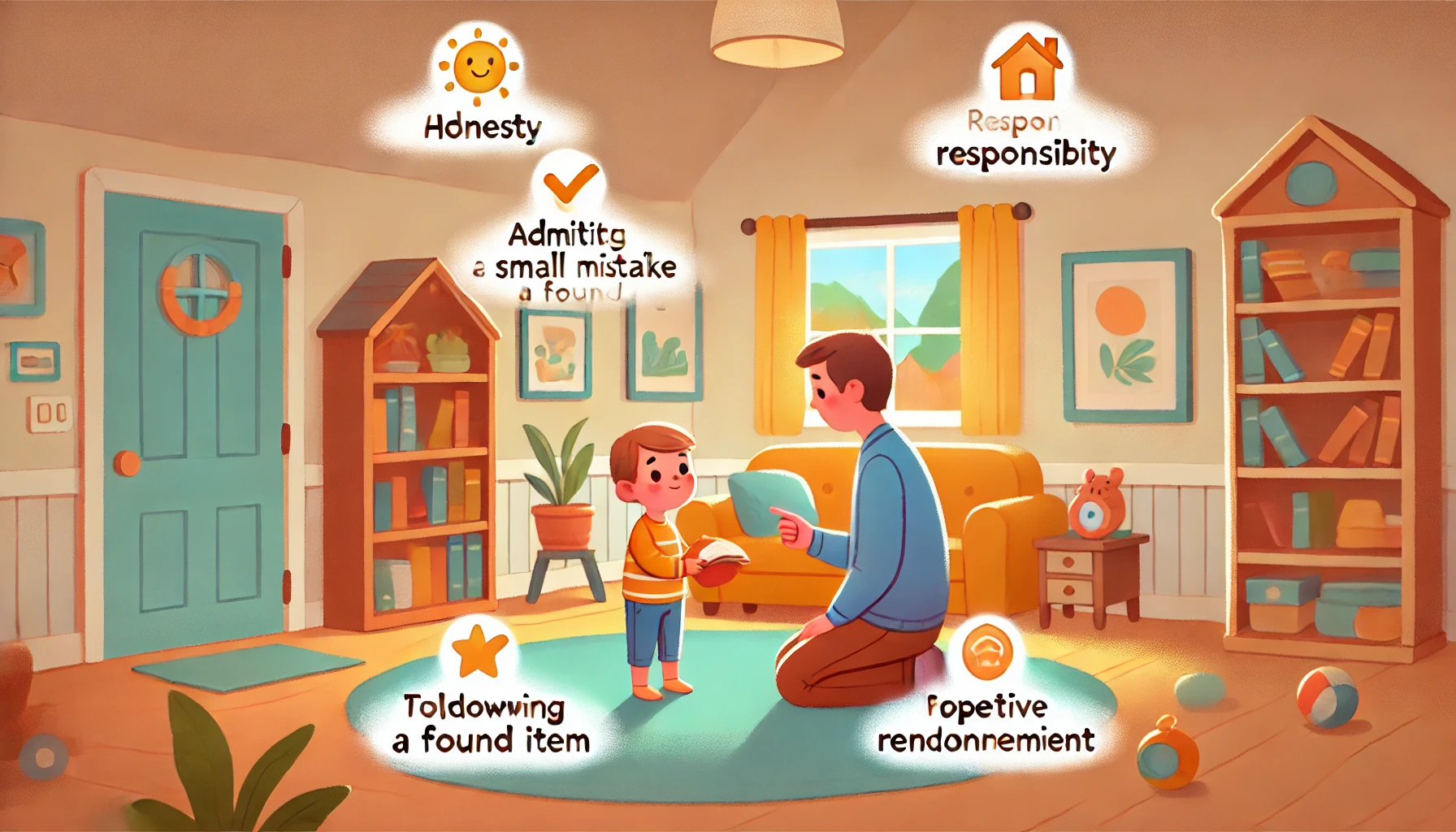How to Teach Young Children About Being Honest and Trustworthy
Honesty and trustworthiness are essential values that help children build strong relationships and develop integrity. Teaching young children to tell the truth, admit mistakes, and be reliable fosters a sense of responsibility and self-respect. Parents can encourage honesty through role-modeling, open communication, and positive reinforcement. In this article, we’ll explore practical ways to help children understand and practice honesty.
Why Teaching Honesty is Important
- Builds trust and strong relationships – Helps children develop meaningful connections.
- Encourages responsibility – Teaches kids to take ownership of their actions.
- Develops moral and ethical awareness – Helps children understand right from wrong.
- Reduces fear of mistakes – Encourages kids to admit errors without fear of punishment.
- Prepares for future success – Lays the foundation for personal and professional integrity.
1. Model Honest and Trustworthy Behavior
Children learn honesty by observing how adults handle truthfulness.
Activity Idea:
- Admit mistakes openly: “I forgot to buy milk, but I’ll go get it now.”
- Keep promises and commitments to show reliability.
- Avoid small lies in front of children, even joking ones, to reinforce honesty.
What Kids Learn:
- That telling the truth is always the best choice
- The importance of keeping promises and being dependable
- How honesty builds trust in relationships
2. Explain What Honesty Means in Simple Terms
Helping children understand honesty makes it easier to practice.
Activity Idea:
- Use simple explanations: “Honesty means telling the truth, even when it’s hard.”
- Give examples: “If you spill juice, being honest means telling me instead of hiding it.”
- Discuss why honesty makes friendships and family relationships stronger.
What Kids Learn:
- That honesty includes both words and actions
- The importance of telling the truth in all situations
- That being honest helps them feel good about themselves
3. Encourage Open Conversations Without Fear
Creating a safe space for truth-telling encourages honesty.
Activity Idea:
- Say, “It’s okay to make mistakes. I just want to know the truth.”
- Avoid harsh punishments when kids admit mistakes; focus on learning instead.
- Praise honesty: “I’m so proud that you told me the truth.”
What Kids Learn:
- That telling the truth is always safe
- The importance of honesty over fear of consequences
- That mistakes are learning opportunities, not reasons for shame
4. Use Stories and Books to Teach Honesty
Books help children understand honesty through engaging characters.
Activity Idea:
- Read books like The Boy Who Cried Wolf or Howard B. Wigglebottom and the Monkey on His Back.
- Ask, “What happened when the character wasn’t honest?”
- Discuss how honesty could have changed the outcome of the story.
What Kids Learn:
- The consequences of lying and the benefits of truthfulness
- That trust is earned through honesty
- How honesty leads to better outcomes in the long run
5. Role-Play Situations Where Honesty Matters
Practicing truth-telling in different situations builds confidence.
Activity Idea:
- Role-play finding a lost item and deciding whether to return it.
- Act out a scenario where a child accidentally breaks something and must admit it.
- Encourage using honest phrases: “I made a mistake, and I want to fix it.”
What Kids Learn:
- How to be honest even in difficult situations
- That honesty is more important than avoiding blame
- The importance of taking responsibility for actions
6. Teach the Value of Keeping Promises
Being trustworthy includes following through on commitments.
Activity Idea:
- Help children make small promises and keep them: “You promised to clean up—let’s do it now.”
- Show how keeping promises makes people feel respected.
- Encourage reliability by recognizing when they follow through.
What Kids Learn:
- That honesty includes being reliable
- How trust is built over time through consistency
- The importance of keeping commitments, big or small
7. Show the Consequences of Dishonesty in a Gentle Way
Helping children understand the impact of dishonesty encourages better choices.
Activity Idea:
- If a child lies, calmly ask, “How do you think this made others feel?”
- Use real-life examples: “If I told you we were going to the park and didn’t, how would you feel?”
- Encourage self-reflection by asking, “What could you do differently next time?”
What Kids Learn:
- That dishonesty can hurt others and break trust
- How honesty strengthens relationships
- That telling the truth is the best way to solve problems
8. Praise and Reinforce Honest Behavior
Encouraging and celebrating honesty motivates children to continue being truthful.
Activity Idea:
- Say, “Thank you for telling me the truth—I know that was hard.”
- Create an “Honesty Star Chart” to track truthful moments.
- Ask, “How did it feel to be honest today?” to build self-awareness.
What Kids Learn:
- That honesty is appreciated and valued
- How honesty makes them feel proud and trustworthy
- That being truthful is always the right choice
Final Thoughts
Teaching young children about honesty and trustworthiness helps them develop integrity, responsibility, and strong social connections. By modeling honesty, encouraging open communication, and reinforcing truthful behavior, parents can guide children in building a lifelong habit of being honest and reliable.
